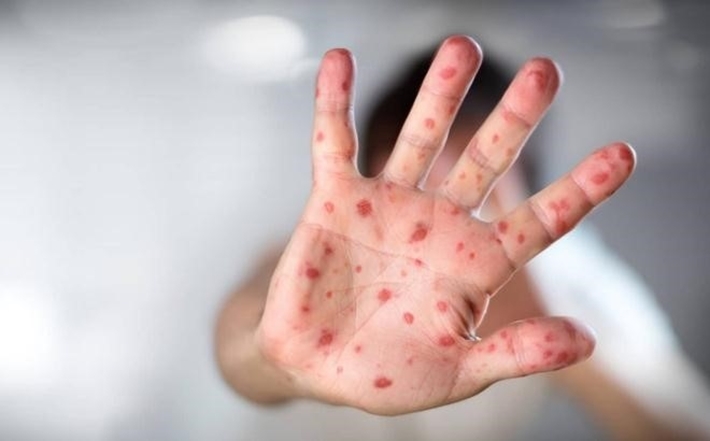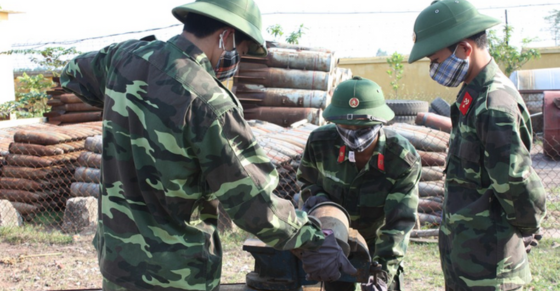Guidelines for diagnosis and treatment of hand, foot, and mouth disease in Vietnam
Are there guidelines for diagnosis and treatment of hand, foot, and mouth disease in Vietnam? - Happiness (Tien Giang)

Guidelines for diagnosis and treatment of hand, foot, and mouth disease in Vietnam (Internet image)
Guidelines for diagnosis and treatment of hand, foot, and mouth disease in Vietnam
The Ministry of Health issued Decision 292/QD-BYT in 2024, guiding the diagnosis and treatment of Hand, Foot and Mouth disease.
- Hand, foot, and mouth disease is an infectious disease caused by an intestinal virus, transmitted from person to person mainly through the digestive tract, easily causing epidemics. The disease occurs year-round and occurs in all ages, but is most common in children under 5 years old.
- Common pathogens are Coxsackie viruses A6, A10, A16, and Enterovirus 71 (EV71).
- The main manifestation is damage to the skin and mucous membranes in the form of blisters in special locations such as the oral mucosa, palms of the hands, soles of the feet, buttocks, and knees.
- The disease can cause many dangerous complications, such as encephalitis - meningitis, myocarditis, and acute pulmonary edema, leading to death if not detected early and treated promptly. Severe complications are often caused by EV71.
- There is now a vaccine to prevent the disease in the world.
Clinical symptoms
- Incubation period: 3–7 days.
- Onset phase: 1–2 days with symptoms such as mild fever, fatigue, sore throat, anorexia, diarrhea several times a day.
- Full-blown phase: can last 3–10 days with typical symptoms of the disease:
+ Mouth ulcers: red ulcers or blisters 2 - 3mm in diameter on the oral mucosa, gums, tongue, causing mouth pain, loss of appetite, and increased salivation.
+ Multiple erythematous lesions or blisters on the palms, elbows, soles of the feet, knees, buttocks, and elbows; lasts for a short time (less than 7 days) and can then leave bruises, very rarely ulcers or superinfections.
+ Mild fever.
+ Poor eating and breastfeeding.
+ Neurological, cardiovascular, and respiratory complications often appear early from day 2 to day 5, possibly up to day 7, of the disease.
+ Startle is an important sign of neurological complications. Children with a high fever or vomiting are at risk of complications.
- Remission phase: usually 3-5 days after the full-blown phase, the child recovers completely if there are no complications.
Complications of hand, foot, and mouth disease
Neurological, cardiovascular, and respiratory complications often appear early from day 2 to day 5, possibly up to day 7, of the disease.
1. Neurological complications: encephalitis, brainstem inflammation, encephalomyelitis, meningitis.
- Startle jerking: short episodes lasting 1–2 seconds, mainly in the arms and legs, easily appearing at the beginning of sleep or when the child lies on his back.
- Drowsiness, restlessness, unsteady walking, trembling limbs, and backward looking eyes.
- Nystagmus.
- Weakness, paralysis of limbs (acute flaccid paralysis).
- Cranial nerve paralysis.
- Convulsions and coma are severe signs, often accompanied by respiratory and circulatory failure.
- Increased muscle tone (showing signs of stiffening and losing the brain, stiffening and losing the shell).
2. Cardiovascular and respiratory complications: myocarditis, acute pulmonary edema, hypertension, heart failure, vascular collapse.
- Fast pulse > 150 beats/minute.
- Slow capillary refill time > 2 seconds.
- Skin rashes (purple veins), sweating, and cold limbs. Symptoms of vasomotor disorders may be localized to only one area of the body (1 arm, 1 leg).
- The first stage has increased blood pressure (systolic blood pressure: children under 1 year old ≥ 100 mmHg; children from 1–2 years old ≥ 110 mmHg; children over 2 years old ≥ 115 mmHg); in the post-vascular stage, blood pressure cannot be measured. .
- Difficulty breathing: rapid breathing, chest indrawing, wheezing, inspiratory stridor, shallow breathing, abdominal breathing, irregular breathing, or SpO2 < 94%.
- Acute pulmonary edema: pink foam, difficulty breathing, cyanosis, moist rales in the lungs, blood, or pink foam in the endotracheal tube.
- Key word:
- hand, foot, and mouth disease
- in Vietnam
- Number of deputy directors of departments in Vietnam in accordance with Decree 45/2025/ND-CP
- Cases ineligible for pardon in Vietnam in 2025
- Decree 50/2025 amending Decree 151/2017 on the management of public assets in Vietnam
- Circular 07/2025 amending Circular 02/2022 on the Law on Environmental Protection in Vietnam
- Adjustment to the organizational structure of the Ministry of Health of Vietnam: Certain agencies are no longer listed in the organizational structure
- Vietnam aims to welcome 22-23 million international tourists in Vietnam in 2025
-

- Emergency response and search and rescue organizations ...
- 10:29, 11/09/2024
-

- Handling of the acceptance results of ministerial ...
- 09:30, 11/09/2024
-

- Guidance on unexploded ordnance investigation ...
- 18:30, 09/09/2024
-

- Sources of the National database on construction ...
- 16:37, 09/09/2024
-

- General regulations on the implementation of administrative ...
- 11:30, 09/09/2024
-

- Notable new policies of Vietnam effective as of ...
- 16:26, 11/04/2025
-
.Medium.png)
- Notable documents of Vietnam in the previous week ...
- 16:21, 11/04/2025
-
.Medium.png)
- Notable documents of Vietnam in the previous week ...
- 16:11, 02/04/2025
-
.Medium.png)
- Notable new policies of Vietnam to be effective ...
- 16:04, 02/04/2025
-
.Medium.png)
- Notable new policies of Vietnam effective from ...
- 14:51, 21/03/2025

 Article table of contents
Article table of contents
